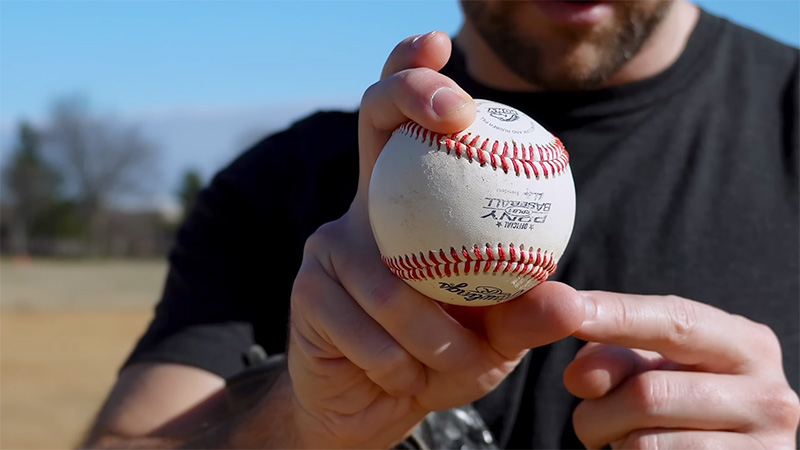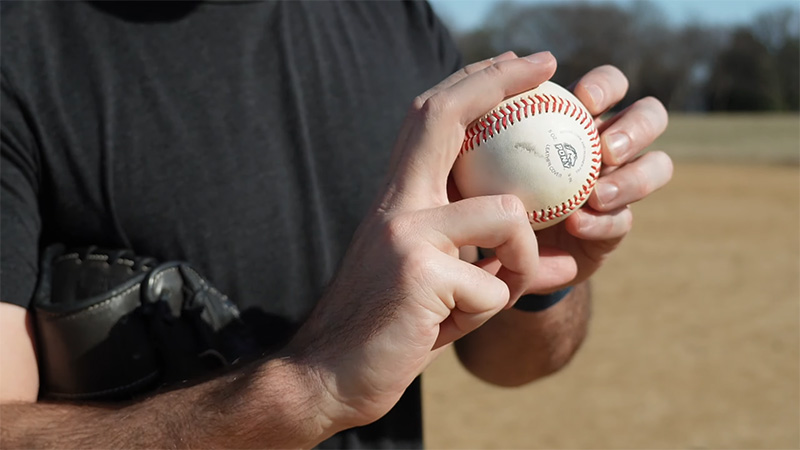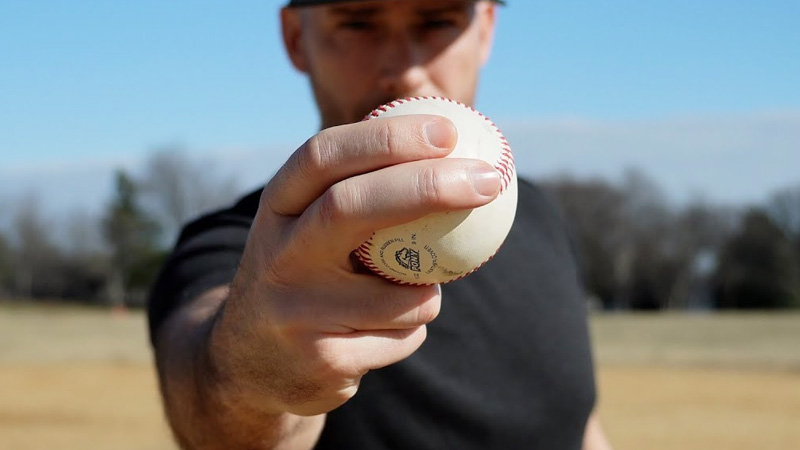The art of pitching in baseball is filled with a wide array of pitches, each with its own unique characteristics and challenges.
Among these pitches is the elusive screwball. Known for its clockwise spin and movement in the opposite direction of a curveball, the screwball can be a powerful weapon in a pitcher’s arsenal.
In this guide, we will explore the intricacies of the screwball pitch and provide a comprehensive overview of how to throw it effectively. We will delve into grip, arm motion, wrist action, release point, and other key elements that contribute to a successful screwball.
So, let us embark on this journey together and unlock the secrets of throwing an effective and deceptive screwball pitch.
What is Screwball Pitch?
The screwball is a type of pitch in baseball that is thrown by a right-handed pitcher to break sharply down and away from a right-handed batter (or vice versa for left-handed pitchers). It is a deceptive pitch that combines elements of a curveball and a changeup.
The screwball is gripped with the fingers positioned off-center on the ball, allowing it to spin in the opposite direction of a traditional curveball.
This results in a late-breaking movement that moves down and away from the batter, making it challenging to make solid contact. The screwball is considered a rare and difficult pitch to master.
Mechanics of a Screwball Pitch in Baseball
The mechanics of a screwball pitch involve various elements that come together to create the unique movement of the pitch.
Grip and Finger Placement
The grip and finger placement are crucial in executing a successful screwball pitch. Unlike traditional pitches, such as fastballs or curveballs, the grip of a screwball is distinct.
To achieve the desired spin and movement, the pitcher must place the ball in their dominant hand with both sets of seams visible. The fingers play a significant role in creating the spin, with the pointer and middle fingers wrapped around the top of the ball.
The pointer finger rests just inside the inner seam, while the middle finger is positioned about an inch to an inch and a half away. This grip allows for optimal control and spin generation.
Description of the Arm Motion and Wrist Action Required
Once the grip is established, the pitcher must execute the appropriate arm motion and wrist action to impart the desired spin on the ball. As the pitcher winds up and prepares to release the pitch, they must focus on the wrist action.
For a right-handed pitcher, the wrist should snap inward, generating a clockwise spin on the ball (or counterclockwise for a left-handed pitcher). This wrist action, combined with the arm motion, creates the necessary torque to make the pitch move in the opposite direction of a curveball.
Importance of Proper Release Point and Timing
The release point and timing of a screwball pitch are critical factors that contribute to its effectiveness. Unlike other pitches, a screwball requires an early release, slightly before the traditional release point.
This early release allows the pitcher to maximize the pitch’s movement and deception. It is essential to develop a consistent release point to ensure accuracy and control. The timing of the release should be practiced and refined to achieve the desired effect on the pitch’s movement.
Step-by-step Guide to Throwing a Screwball Pitch

Mastering the mechanics of a screwball pitch requires a step-by-step approach to ensure proper execution.
Correct Ways of Gripping the Ball
The first step in throwing a screwball pitch is to establish the correct grip on the ball. As mentioned earlier, the grip for a screwball is unique compared to other pitches. Place the ball in your dominant hand, ensuring that both sets of seams are visible.
Wrap your pointer and middle fingers around the top of the ball, with the pointer finger resting just inside the inner seam and the middle finger positioned about an inch to an inch and a half away. This grip provides the necessary control and leverage to create the desired spin.
Body Positioning and Windup
Proper body positioning and windup are crucial for generating power and maintaining balance during the pitch. Start by positioning yourself on the pitcher’s mound with your feet shoulder-width apart.
As you begin the windup, shift your weight onto your back leg while lifting your front leg for balance. The windup should be smooth and fluid, allowing for a seamless transition into the pitching motion.
Arm Motion and Wrist Snap
As you initiate the pitching motion, focus on your arm motion and wrist action. Begin by bringing your throwing arm forward, keeping it relaxed and loose.
As your arm reaches the release point, engage your wrist by snapping it inward for a right-handed pitcher (or counterclockwise for a left-handed pitcher). This snap of the wrist imparts the desired spin on the ball, contributing to the screwball’s unique movement.
Release Point and Follow-through
The release point plays a crucial role in the effectiveness of a screwball pitch. Aim to release the ball slightly earlier than you would with other pitches to maximize its movement.
As you release the ball, focus on maintaining a smooth and fluid follow-through. Allow your arm to extend fully, pointing towards the target, and finish with a balanced stance. A proper follow-through ensures accuracy and reduces the risk of injury.
Tips for Mastering the Screwball Pitch

Mastering the screwball pitch requires dedication and a commitment to continuous improvement. In this section, we will provide valuable tips to help you refine your screwball technique.
These tips include emphasizing the importance of practice and repetition, experimenting with different arm angles and speeds, seeking feedback from coaches or pitching instructors, and taking care of arm health and injury prevention.
Emphasizing the Importance of Practice and Repetition
To master any pitch, including the screwball, consistent practice, and repetition are crucial. Set aside dedicated practice sessions to work on your screwball technique.
Focus on developing a smooth and fluid motion, paying attention to grip, arm motion, and wrist action. Repetition will help you build muscle memory and refine your mechanics, leading to more consistent and effective pitches.
Experimenting With Different Arm Angles and Speeds
Pitching is not a one-size-fits-all endeavor. Experimenting with different arm angles and speeds can help you find the most comfortable and effective approach for your screwball.
Some pitchers may benefit from a slightly higher or lower arm angle, while others may find success with variations in pitch speed. Take the time to explore different approaches and adjust based on what feels most natural and yields the desired movement and control.
Seeking Feedback From Coaches or Pitching Instructors
Seeking feedback from experienced coaches or pitching instructors can provide valuable insights and guidance in mastering the screwball pitch. They can offer technical advice, identify areas for improvement, and provide drills or exercises to enhance your technique.
Coaches and instructors have the expertise to fine-tune your mechanics and offer personalized tips tailored to your unique pitching style.
Taking Care of Arm Health and Injury Prevention
The health and longevity of your pitching arm are paramount. While the screwball can be an effective pitch, it places additional stress on the arm compared to other pitches. Therefore, it is essential to prioritize arm health and injury prevention.
Incorporate proper warm-up routines, stretching exercises, and strength training specific to the pitching motion. Additionally, listen to your body and take breaks when needed to avoid overuse injuries.
Consulting with a sports medicine professional or physical therapist can provide valuable insights into maintaining arm health and preventing injuries.
Some Limitations of the Screwball Pitch
While the screwball pitch can be an effective weapon in a pitcher’s arsenal, it is important to be aware of its risks and limitations.
The Stress It Can Put on the Arm
The screwball pitch involves a unique arm motion and wrist action, which can place additional stress on the pitching arm compared to other pitches.
The torque generated during the delivery, particularly the inward snap of the wrist, can lead to increased strain on the elbow and shoulder joints.
It is crucial to be mindful of this stress and prioritize arm health and injury prevention when incorporating the screwball into your pitching repertoire.
Regular conditioning, proper mechanics, and listening to your body are essential for minimizing the risk of arm injuries associated with this pitch.
Recommendations for Proper Warm-up and Conditioning
To mitigate the potential risks of the screwball pitch, it is important to establish a comprehensive warm-up and conditioning routine. Prior to pitching, engage in dynamic warm-up exercises that target the arm, shoulder, and core muscles.
Incorporate stretching exercises to improve flexibility and range of motion. Additionally, implement strength training exercises that focus on building arm and shoulder strength while maintaining proper form.
A well-rounded warm-up and conditioning routine will prepare your body for the demands of the screwball pitch and help reduce the risk of injuries.
When and How Frequently to Use the Pitch
While the screwball can be an effective pitch, it is important to use it judiciously and understand its limitations. Due to the stress, it puts on the arm and its more complex mechanics, pitchers should be cautious not to overuse the screwball.
It is recommended to work closely with coaches or pitching instructors to determine the appropriate situations to utilize the pitch.
Consider factors such as the pitcher’s age, physical development, and overall pitching workload when deciding when and how frequently to incorporate the screwball into game situations.
Proper pitch selection and pitch mix management are essential for maintaining arm health and optimizing performance.
Pros and Cons of the Screwball Pitch: At A Glance
| Pros | Cons |
| Unique movement that can deceive batters | Increased stress on the pitching arm |
| Offers a different look to hitters | Requires proper warm-up and conditioning |
| Can be an effective strikeout pitch | Risk of overuse and potential arm injuries |
| Adds versatility to the pitching repertoire | Requires mastery of complex mechanics |
| Can generate ground balls and weak contact | Limited usage and situational effectiveness |
Note: The table highlights some of the pros and cons associated with the screwball pitch.
It is important for pitchers to weigh these factors and make informed decisions when incorporating the screwball into their repertoire.
Proper training, conditioning, and arm care are crucial for managing the risks and maximizing the benefits of this pitch.
FAQs
Is the screwball pitch only effective against batters of a specific handedness?
No, the screwball can be effective against both left-handed and right-handed batters. The movement of the pitch, breaking in on the hands of a same-handed batter, can create deception and make it challenging for hitters to make solid contact.
Can the screwball be thrown as a strikeout pitch?
Yes, the screwball can be an effective strikeout pitch. Its unique movement and break can deceive batters, leading to swings and misses or weak contact.
Are there any Major League Baseball pitchers who currently throw a screwball?
The screwball has become a less common pitch in professional baseball, and it is rare to see pitchers relying heavily on it. While there might be pitchers at various levels who incorporate the screwball, it is not a widely utilized pitch in today’s game.
Can throwing a screwball increase the risk of arm injuries?
Yes, the screwball pitch can put additional stress on the pitching arm due to the mechanics involved, particularly the inward wrist snap. This increased stress can potentially lead to arm injuries if not properly managed or if the pitch is overused.
Are there any recommended drills to help develop a better screwball pitch?
Yes, there are drills that can help improve the mechanics and effectiveness of the screwball pitch. Working with a pitching coach or instructor can provide personalized drills and exercises tailored to your specific needs and areas of improvement.
Conclusion
The screwball pitch is a unique and challenging pitch that can add a valuable element to a pitcher’s repertoire. While it offers deception and movement that can confound batters, it also presents certain risks and limitations that must be considered.
It is essential for pitchers to understand the stress the screwball can put on their arms and take appropriate measures to mitigate that risk.
With its mechanics, being aware of its risks, and taking a thoughtful approach to its usage, pitchers can develop an effective and well-executed screwball pitch that adds versatility to their game and keeps batters off balance. Thank you for your time.







